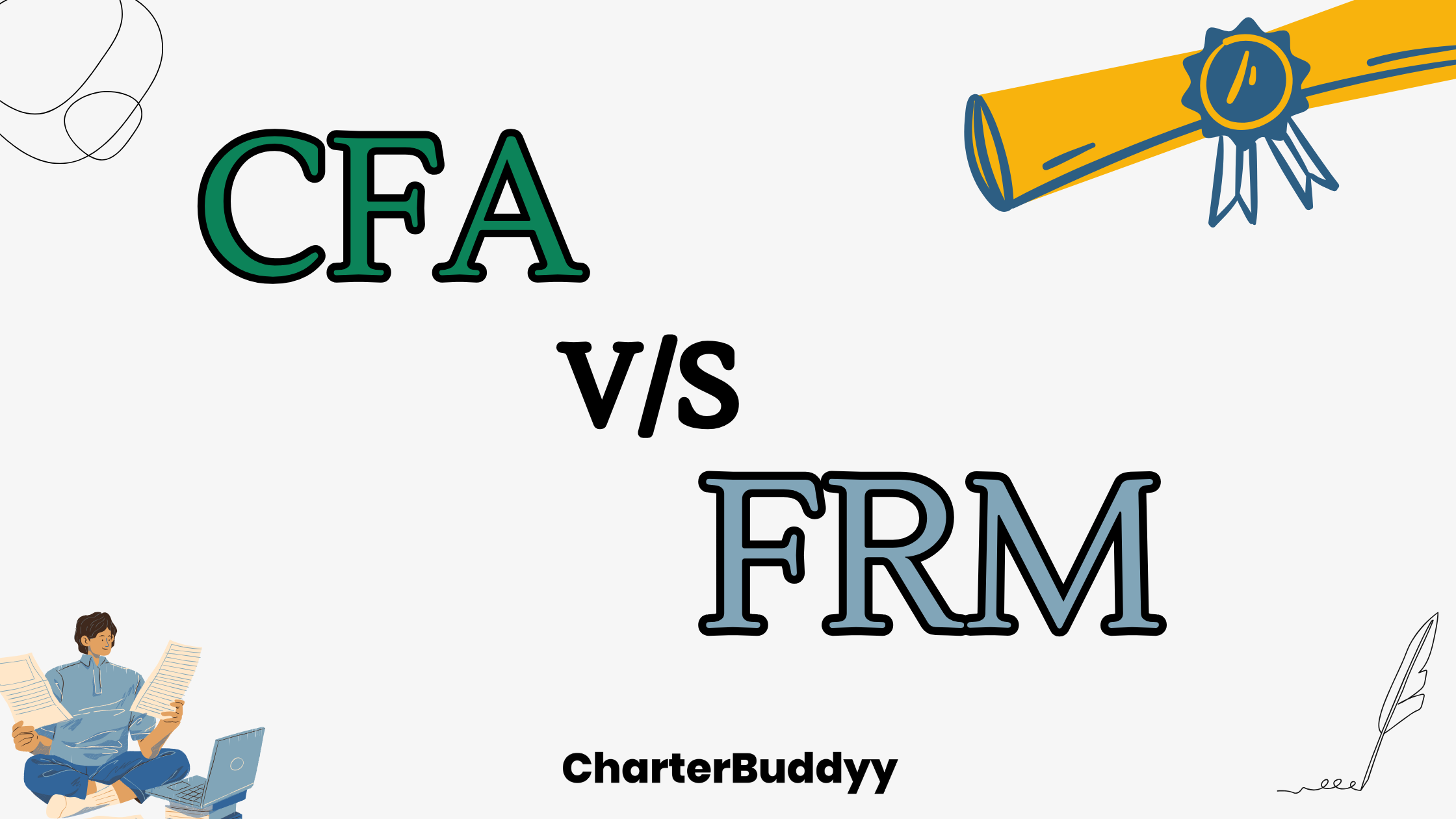
In the world of finance certifications, two of the most prestigious and globally recognized designations are the CFA (Chartered Financial Analyst) and the FRM (Financial Risk Manager). Both credentials open doors to lucrative investment and risk management career opportunities, but they cater to different financial domains.
If you're wondering whether to go for the CFA or the FRM certification, this blog will help you decide by comparing them based on focus, career opportunities, exam structure, salary prospects, and time commitment.
CFA vs FRM: Curriculum
-
CFA Program
- Ethical and Professional Standards
- Investment Tools (Economics, Financial Reporting, Quantitative Methods)
- Asset Classes (Equities, Fixed Income, Derivatives, Alternative Investments)
- Portfolio Management and Wealth Planning
-
FRM Certification
- Foundations of Risk Management
- Quantitative Analysis for Risk Assessment
- Financial Markets and Products
- Valuation and Risk Models
- Operational and Integrated Risk Management
Focus: The CFA certification is primarily designed for professionals in investment analysis, portfolio management, and financial advisory roles. It provides a strong foundation in financial analysis, equities, fixed income, derivatives, alternative investments, and ethics.
Key Subjects in the CFA Curriculum:
Ideal for: Individuals interested in careers in portfolio management, equity research, wealth management, and investment banking.
You can check out our blog on the CFA program for detailed information.
Focus: The FRM certification is for professionals who want to specialize in risk. It emphasizes quantitative analysis, credit risk, market risk, operational risk, and liquidity risk.
Key Subjects in the FRM Curriculum:
Ideal for: Those looking to work in risk management, treasury, regulatory compliance, or credit risk analysis.
Check out our blog on the FRM program for detailed information.
CFA vs FRM: Career Opportunities
Both certifications offer strong career prospects, but they lead to different paths.
-
CFA Career Opportunities
- Portfolio Manager: Managing investment portfolios for individuals, institutions, or funds.
- Equity Analyst: Conducting in-depth financial research to recommend investment strategies.
- Investment Banker: Assisting companies with mergers, acquisitions, and financial structuring.
- Financial Advisor: Advising clients on investment strategies and financial planning.
-
FRM Career Opportunities
- Risk Analyst: Assessing potential risks within financial institutions.
- Credit Risk Manager: Managing exposure to borrower defaults.
- Market Risk Specialist: Analyzing risks tied to market fluctuations.
- Regulatory Risk Manager: Ensuring compliance with financial laws and regulations.
You should purse this program if you're drawn to investment banking, asset management, or financial advisory roles.
If you're passionate about risk assessment, credit analysis, regulatory compliance, or gaining deeper knowledge about risk, FRM is the right fit.
CFA vs FRM: Exam Structure and Difficulty:
-
CFA Exam
- Levels: Three levels (CFA Level I, II, and III)
- Duration: 3-4 years on average to complete
- Pass Rates: Historically low (~40-50% per level)
-
FRM Exam
- Levels: Two parts (FRM Part I and Part II)
- Duration: 1-2 years on average
- Pass Rates: Average of 50-60% for both levels.
If you’re wondering about the difficulty of CFA vs FRM, both are challenging, but the CFA exam is broader, while the FRM exam is more specialized and quantitative.
Check out our blog on tips and tricks to ace the CFA exam.
CFA vs FRM: Salary
-
CFA Salary
-
FRM Salary
CFA charter holders' salary prospects are strong in India and the US, especially in roles like portfolio management and equity research.
Average annual salary in India: Rs.28.6 lac
Average annual salary in the USA: $126,000
Average annual salary in India: up to 30 lacs
Average annual salary in the USA: $102,000
Cost and Time Commitment: CFA vs FRM
-
CFA Exam Costs
- Exam Fees: $900 – $1,200 per level
- Study Time: 900+ hours total (300+ per level)
-
FRM Exam Costs
- Exam Fees: $1,000 –$1,200 for Part I, $600 – $800 for Part II
- Study Time: 400-600 hours total
Check out this blog for an in-depth analysis of how much the CFA program costs.
CFA vs FRM: Which One Should You Choose?
-
✅ Choose the CFA Program if:
- You want to work in investment management, portfolio management, or financial analysis.
- You're interested in a broad finance curriculum covering multiple asset classes.
- You want to build a long-term career in investment banking, asset management, or wealth advisory.
-
✅ Choose the FRM Certification if:
- You want to specialize in risk management, credit risk, or regulatory compliance.
- You enjoy quantitative analysis and financial modeling.
- You’re targeting roles in risk management departments of banks, hedge funds, and regulatory bodies.
No matter which path you choose, both the CFA and FRM will significantly enhance your expertise and credibility in the finance industry.
Explore our other blogs for more tips, strategies, and insights. Your journey to success starts here!
Table of Contents
- CFA vs FRM: Curriculum
- CFA vs FRM: Career Opportunities
- CFA vs FRM: Exam Structure and Difficulty:
- CFA vs FRM: Salary
- Cost and Time Commitment: CFA vs FRM
- CFA vs FRM: Which One Should You Choose?

